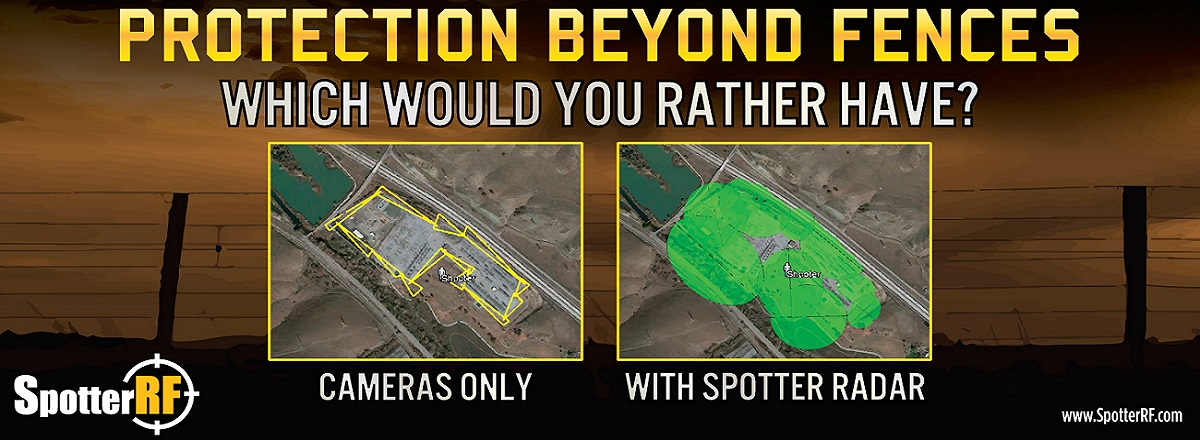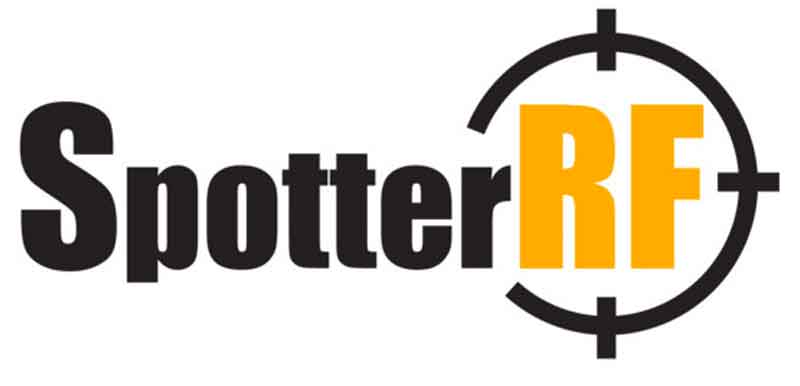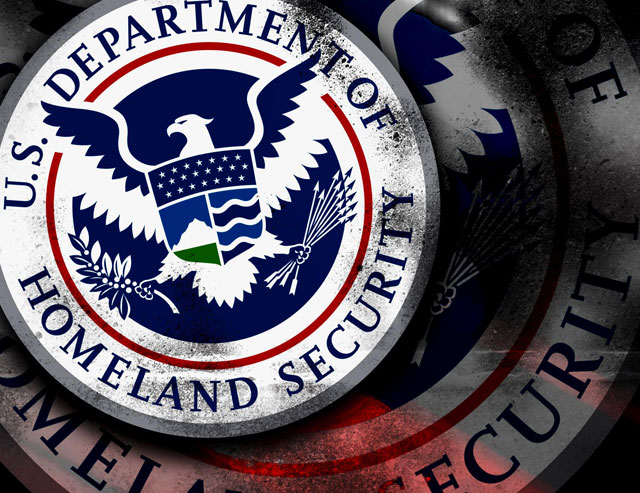
SpotterRF, the leader in low cost compact surveillance radar (CSR), and an ‘ASTORS’ Award Winner for Two Consecutive Years in the Annual ‘ASTORS’ Homeland Security Awards Program, is pleased to announce the company’s 3D-500, the First Full Dome 3D Counter-Drone Radar, has been nominated to compete in the 2018 ‘ASTORS’ Awards Program.
The threat of sUAS (small unmanned aerial systems or small drones) is dramatically increasing as they become more accessible to the public, both friend and foe.
Anyone can buy a drone and utilize it for illegal and harmful activities, such as espionage or delivering nefarious payloads into secure or critical areas.
As aerial threats such as the recent drone attack on Venezuelan President Maduro, become an increasingly real threat, drone jamming and counter-drone systems are gaining attention and being more widely sought after.
(Officials in the South American country say explosives were dropped from drones as President Nicolas Maduro attended an event in Caracas. Courtesy of ABC News and YouTube. Posted on Aug 5, 2018.)
The alarming fact is that the frequency of such incidents is dramatically increasing.
Effective and cost-effective counter-drone systems, are also being sought after to tackle challenges such as illegal contraband drone deliveries to prisons, for drone espionage of critical and sensitive locations, to combat drone transport by international drug cartels to transport illegal drugs across the U.S./Mexican Border, and to counter domestic and international terror attacks.
In September 2017, FBI Director Christopher Wray warned Congress that terrorist groups are looking to use drones to wage terror attacks in the U.S.
“I think we do know that terrorist organizations have an interest in using drones,” Wray testified in a hearing for the Senate Homeland Security and Government Affairs Committee.
“We’ve seen that overseas already with growing frequency. I think the expectation is that it’s coming here imminently.”
“I think they are relatively easy to acquire, relatively easy to operate, and quite difficult to disrupt and monitor.”
(FBI Director Christopher Wray has warned US Congress on Wednesday of imminent terrorist drone attacks on the US soil. Courtesy of C-Span, Chuck Ross and YouTube. Posted on Sep 27, 2017.)
A solution to combat these aerial threats is crucial and has been a high priority of SpotterRF since 2009.
Developed to counter and mitigate drone attacks, is the latest in a line of counter-drone radars from SpotterRF – the revolutionary 3D-500.
The 3D-500 is the first radar that creates a full dome drone detection area from 0 to 90 degrees in the vertical and 360 degrees in the horizontal with a single radar that weighs 12 pounds.
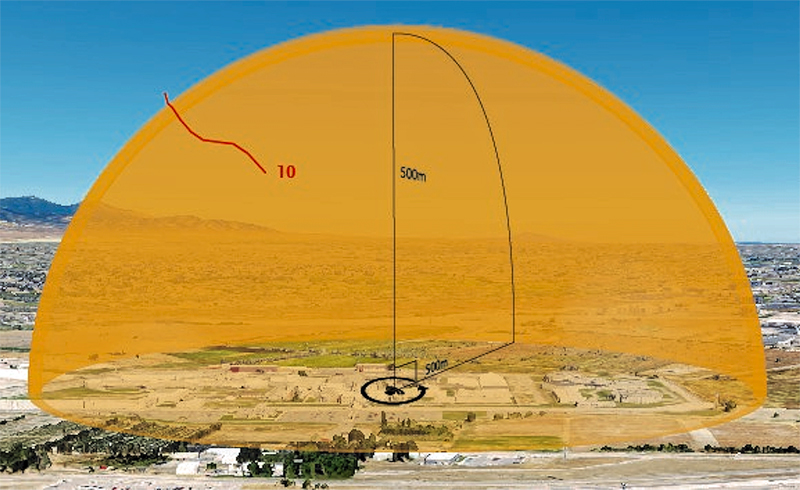
The 3D-500 radar measures latitude, longitude and altitude of all aerial targets in a 1 km wide hemisphere dome, even directly above the radar with no gaps in coverage.
Rapid threat assessment is simple with the automatic detection and 3D tracking of sUAS combined with fully automated camera cueing on the target.
Manpower and cost are both reduced with this system while mitigating the threat of undesired aerial presence.
Limitations of Current Solutions
Current solutions are limited in their technical capabilities, explains Logan Harris, CEO of SpotterRF.

-
Optical and thermal sensors don’t have large enough fields of view to detect targets in the sky.
- Additionally, they are affected by daily weather conditions, further reducing detection probability.
-
Acoustic sensors are prone to noise pollution and are not able to provide precise tracking of targets.
- They can be limited in range, often only able to detect several hundred feet out.
-
Radio transmission detection systems are typically limited to known frequencies and cannot detect sUAS that are not being actively controlled by an RF signal.
-
Other radar systems range from large rotating radars with limited vertical coverage leaving large gaps above the radar, to systems that require many different radar panels to be used simultaneously increasing the complexity and the cost.
(According to a report by Gizmodo, the US Department of Homeland Security is asking Congress to approve new legislation that would increase the agency’s ability to surveil, research, and attack drones flying in US airspace. Courtesy of Wochit News and YouTube. Posted on Jun 7, 2018. Learn More from DHS Security Chief Kirstjen M. Nielsen’s July 4, 2018 Washington Post opinion piece at bottom.)
3D-500 System Details
SpotterRF is now offering a full drone mitigation system based on the 3D-500 which consists of the following:
- The compact 3D-500
- Along-range optical/thermal camera
- A small networked hub containing power management and integration software,
- And an optional mitigation component – often a directional RF jammer on a pan/tilt turret to make even threat response automated
(Learn More in this fascinating application, as John Adrain, of Heracles Research Corporation uses SpotterRF radar to protect high end residential home, featured on the Discovery Channel. Courtesy of the Discovery Channel, SpotterRF and YouTube. Posted on Apr 30, 2015.)
Using the Full SpotterRF System
Using this system is extremely easy and simple. A typical scenario goes as follows:
- An sUAS approaches the site and enters the 500 meter detection radius of the radar
- The 3D radar automatically detects the target and tracks its location in midair, triggering an alarm to the operator
- Simultaneously, the PTZ camera is cued automatically to the target in real-time
- The operator glances at the screen and assesses the threat in just a few seconds
- Then a decision to activate the directional RF jammer may be made
- Triggered, the communication from the controller is actively jammed, which typically sends the sUAS back to the pilot removing the threat from the area
- The pilot can then be located and detained
- Alternatively, the jammer can be set to automatically apply its threat mitigation protocols if no operator is present to assess the situation
To analyze the threat of the sUAS, the operator must only look at the screen.
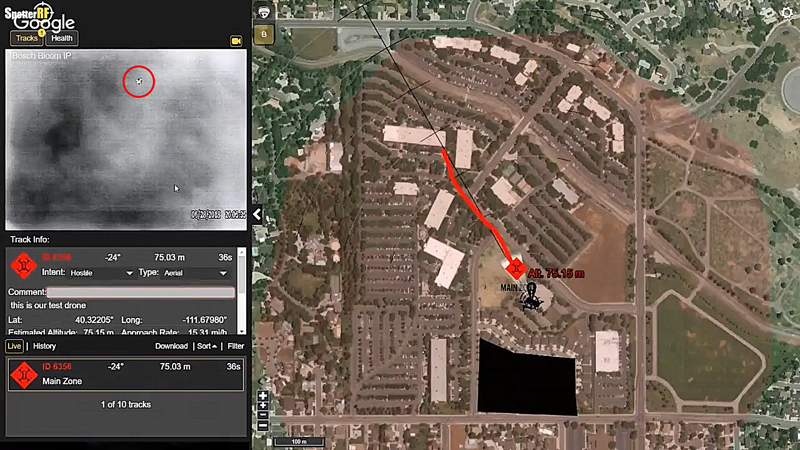
The tracking software displays a map of the location of the threat and generates a real-time track of the target as it is detected by the radar.
Target information such as GPS position, altitude, and speed is gathered and displayed on the screen.
Artificial intelligence is applied to this data to create greater efficiency in identifying which targets are sUAS while filtering out more than 95% of other clutter, such as birds.
Taking the 3D-500 to the Mobile Arena
Compact radar technology also allows for mobility of the entire system.
Weighing only 12 pounds, the flexibility of the 3D-500 makes it capable of being set up nearly anywhere in a manner of minutes.
Within a couple hours it can be calibrated, configured and ready for full system use on top of buildings, on stadiums, prisons or other structures.
This makes it ideal for use in quick deployment applications such as sporting events, concerts, VIP events, or mobile force protection.
(See why seven of the top 10 largest US electric utility providers chose SpotterRF Radar, as the best option for Electrical Utilities to secure their perimeter in all weather conditions. Courtesy of SpotterRF and YouTube. Posted on Apr 4, 2017.)
The SpotterRF 3D-500 Counter-UAS System solution is unique in the industry in nearly every aspect.
The system is small, has low power usage, and is not affected by inclement weather conditions.
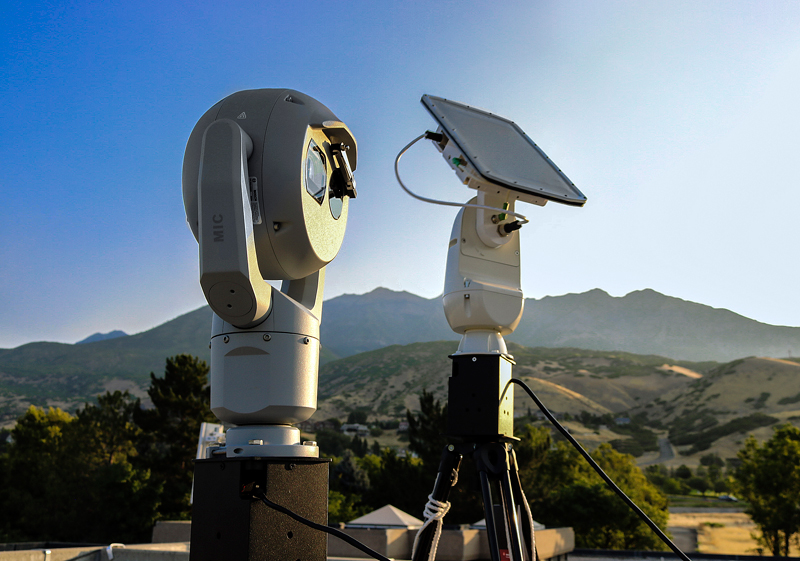
It has large volumetric coverage even directly overhead with no gaps in coverage, tracks targets in 3 dimensions, and has high probability of detection with low false alarm rate.
The ability to slew-to-cue cameras to midair targets allows for it to be completely autonomous and gives it even greater precision than other solutions which often require unrealistic amounts of manpower.
There are other 3D counter-drone solutions on the market, but SpotterRF is confident they’ve taken the lead.
Cost effective, energy efficient, impervious to inclement weather plus the ability to track threats in all 3 dimensions – SpotterRF says the 3D-500 Counter-UAS System is “perfect for protecting assets and personnel from the growing threat of drones.”
SpotterRF at a Glance
SpotterRF provides protection beyond fences with the world’s most advanced Compact Surveillance Radar (CSR) systems for perimeter security and force protection.
Made in the USA and engineered for extreme conditions, SpotterRF technology develops the most compact, lightweight, energy efficient, and cost-effective radar solutions for elite warfighters and critical infrastructure requirements, such as electrical utilities.
SpotterRF in the 2018 ‘ASTORS’ Homeland Security Awards Program
AST focuses on Homeland Security and Public Safety Breaking News, the Newest Initiatives and Hottest Technologies in Physical & IT Security, essential to meeting today’s growing security challenges.
The 2018 ‘ASTORS’ Homeland Security Awards Program, is organized to recognize the most distinguished vendors of Physical, IT, Port Security, Law Enforcement, Border Security, First Responders, (Fire, EMT, Military, Support Services Vets, SBA, Medical Tech) as well as the Federal, State, County and Municipal Government Agencies – to acknowledge their outstanding efforts to ‘Keep our Nation Secure, One City at a Time.’
As an ‘ASTORS’ competitor, 3D-500, the First Full Dome 3D Counter-Drone Radar will be competing against the industry’s leading providers of Innovative Persistent Aerial Monitoring Solutions.
To Learn More about the ‘ASTORS’ Homeland Security Awards Program, see 2017 ‘ASTORS’ Homeland Security Award Winners Honored at ISC East.
 Over 100 distinguished guests from National, State and Local Governments, and Industry Leading Corporate Executives from companies allied to Government, gathered from across North America and the Middle East to be honored from disciplines across the Security Industry in their respective fields which included representatives from:
Over 100 distinguished guests from National, State and Local Governments, and Industry Leading Corporate Executives from companies allied to Government, gathered from across North America and the Middle East to be honored from disciplines across the Security Industry in their respective fields which included representatives from:
- The Department of Homeland Security (DHS) Science and Technology Directorate (S&T)
- U.S. Customs and Border Protection
- The Department of Justice
- The Security Exchange Commission
- State and Municipal Law Enforcement Agencies
- The Royal Canadian Mounted Police
- Leaders in Private Security
Good luck to SpotterRF on becoming a Winner of the 2018 American Security Today’s Homeland Security Awards Program!
The highlight of the 2018 AST Homeland Security Awards Season will be the 2018 ‘ASTORS’ Awards Presentation Luncheon to honor Nominees, Finalists and Winners on November 14, 2018 at ISC East 2018 at the Jacob Javits Exhibition Center.
To learn more about SpotterRF’s wide range of offerings, please visit the companies website at https://spotterrf.com.
Last Call for the 2018 ‘ASTORS’ Homeland Security Awards at https://americansecuritytoday.com/ast-awards/.
Join us in Recognizing these Industry-Leading Firms for their Outstanding Product Development Achievements, Exciting New Technologies and Innovative Education Programs to address the growing Homeland Security Threats our Nation is facing.

Take advantage of this exclusive luncheon opportunity to Invite your Guests, Clients and Show Visitors to a lovely & affordable plated meal event in the heart of New York City, for a Fabulous Networking Opportunity!
ISC East is the Northeast’s largest security industry event and your ‘ASTORS’ Awards Luncheon registration includes complimentary attendee access to the show.
Already Exhibiting and/or Attending the 2018 ISC East Conference?
Join us to meet the 2018 ‘ASTORS’ Award Winning Company Executives & Government Agency Representatives.
Register today for the ‘ASTORS’ Homeland Security Awards Luncheon on November 14th, in New York City and give yourself & your clients a break from the show!
Gourmet luncheon choices available per person, or reserve a table – make an Impression on your Guests and Receive an Exclusive Discount Opportunity.

To Learn More about the AST 2018 ‘ASTORS’ Homeland Security Awards Program and Luncheon, please contact Michael Madsen, AST Publisher at: mmadsen@americansecuritytoday.com or call 732.233.8119 (mobile) or 646-450-6027
Learn More…
The seriousness of the threat of border drones was highlighted in a July Washington Post opinion piece by Department of Homeland (DHS) Security Chief Kirstjen M. Nielsen (as follows.)
The U.S. isn’t prepared for the growing threat of drones
By Kirstjen M. Nielsen, July 4, 2018

Drone technology offers the potential to change our world — from enabling historic transformations in e-commerce to faster emergency response.
But the technology also has a dark side.
It can be used to spy on us, to threaten our critical infrastructure, or to attack crowds and public places.
For years, the Department of Homeland Security has worried about the dangers of unmanned aerial systems, and we have sought the legal authority to protect Americans against corrupted aerial devices.
Today I have a pressing message for Congress: Time is running out.
As secretary of homeland security, I can tell you that threat is outpacing our ability to respond. Without congressional action, the U.S. government will remain unable to identify, track and mitigate weaponized or dangerous drones in our skies.
Just last month, officials at U.S. Customs and Border Protection reported a spike in the use of drones at our borders.
Transnational criminals are undoubtedly exploiting these systems to search for security gaps so they can avoid our officers and sneak into the country undetected.
Criminals are also using them to smuggle drugs.
Last year, Border Patrol agents arrested a 25-year-old man for using a drone to ferry tens of thousands of dollars’ worth of methamphetamine across the southwest border, raising the specter that other dangerous goods could be transported the same way.
(Learn More. 13 pounds of drugs seized, worth an estimated $50 thousand. Courtesy of Fox News and YouTube. Posted on Aug 21, 2017.)
Worse still, terrorist groups such as the Islamic State aspire to use armed drones against our homeland and U.S. interests overseas.
They have deployed bomb-laden aerial devices on the battlefield to surveil, disrupt and kill opposing forces, and they are sharing that expertise with others.
We have already worked with our partners to stop terrorist plots that could have involved drone technology.
(The Islamic State’s use of drones is increasingly sophisticated, a worrying battlefield development with implications for other insurgencies. Courtesy of The Washington Post and YouTube. Posted on May 11, 2017.)
But we need to acknowledge that our first and last chance to stop a malicious drone might be during its final approach to a target.
Unfortunately, the laws on the books today were not written with weaponized drones in mind.
As a result, the nation’s two biggest law enforcement departments — DHS and the Justice Department — have their hands tied when it comes to protecting Americans.
For instance, DHS should be able to access signals being transmitted between a nefarious drone and its ground controller to accurately geolocate both quickly.













